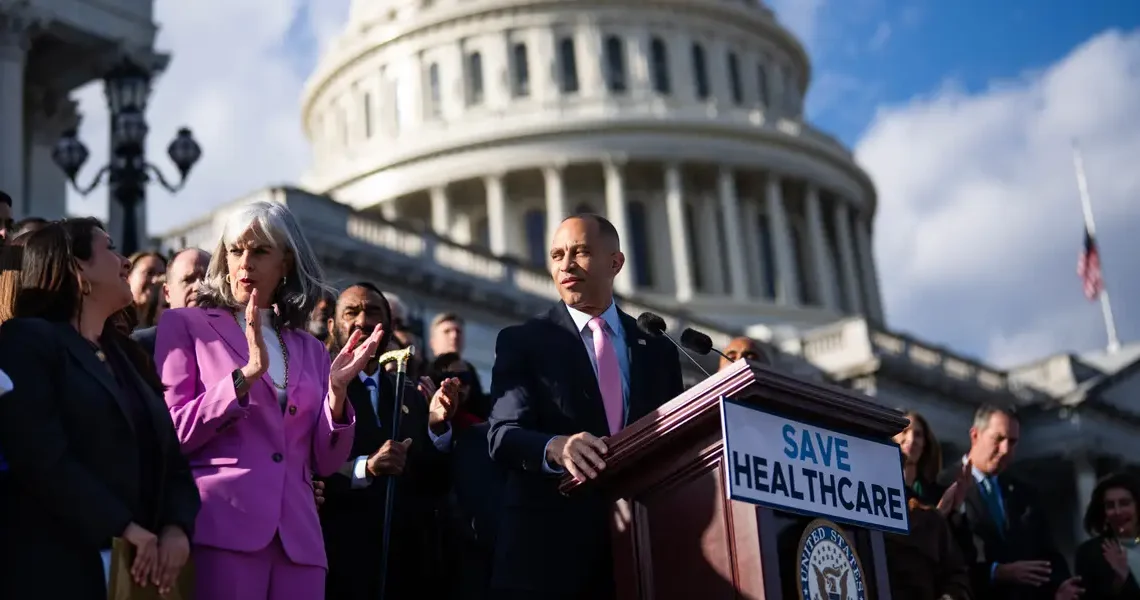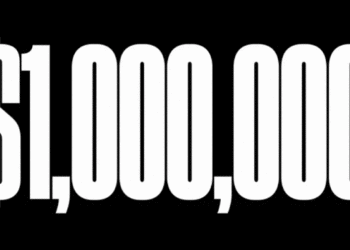Tom Williams/CQ-Roll Call, Inc via Getty Images
Millions of Americans could see their health insurance premiums climb by a staggering average of 75% next year.
Enhanced Affordable Care Act subsidies — which lower the cost of marketplace coverage for middle- and low-income households — are set to expire December 31. And, without a healthcare spending agreement from Congress, it’s likely they won’t be renewed. With open enrollment underway for those plans, Americans could be facing a new round of insurance sticker shock.
Extending these ACA tax credits has been a key goal of Democrats, contributing to the stalemate at the heart of the recently-ended government shutdown. While the government reopened on November 12 after a record 43 days, lawmakers failed to take action on the subsidies, although the deal reopening the government provides for a fresh debate over them next month. They also didn’t reverse President Donald Trump’s changes to Medicaid, another goal for Democrats.
For Americans, this all could mean less access to health insurance and higher costs for care.
What to know about ACA and Medicaid in 2026
Low- and middle-income households will feel the brunt of losing enhanced ACA subsidies.
Passed in 2021 under the Biden administration, the expanded tax credits boosted the amount of relief that Americans on marketplace plans could receive. Over the past decade, marketplace enrollment has jumped from 11 to over 24 million. This is partially because the enhanced subsidies were available to middle-income Americans up to 400% of the poverty line — which is $128,600 for a family of four — making marketplace plans more affordable.
Without these credits in place, people on ACA plans could see their out-of-pocket premium costs increase by an average of over 75%, a KFF analysis shows. Some enrollees would see their financial relief shrink and others would be disqualified entirely, depending on their income, with some premiums increasing by over $1,000 annually. On top of the direct loss of the enhanced subsidies, many insurers are likely to increase premiums to offset a projected decline in enrollment among healthier Americans.
Last year, nearly 20 million Americans received these enhanced ACA subsidies.
window.addEventListener(“message”,function(a){if(void 0!==a.data[“datawrapper-height”]){var e=document.querySelectorAll(“iframe”);for(var t in a.data[“datawrapper-height”])for(var r,i=0;r=e[i];i++)if(r.contentWindow===a.source){var d=a.data[“datawrapper-height”][t]+”px”;r.style.height=d}}});
Medicaid recipients could also see an increase in their healthcare costs. Despite negotiations and the government shutdown, Congress didn’t agree to reverse Trump’s changes to that program from the One Big Beautiful Bill Act.
In the legislation, the president called for new Medicaid qualifications that would require non-exempt Americans to work 80 hours a month to qualify for insurance. The law also limits the amount of money states can funnel from provider taxes toward Medicaid. This means that hospitals will lose funding and some Medicaid recipients will experience higher out-of-pocket costs over the next several years.
Hospitals in rural areas and low-income Americans are likely to be highly impacted. Most Medicaid recipients live near the federal poverty line, though the exact threshold varies by state. As of mid-2025, about 83 million Americans were enrolled in Medicaid and the Children’s Health Insurance Program.
!function(){“use strict”;window.addEventListener(“message”,function(a){if(void 0!==a.data[“datawrapper-height”]){var e=document.querySelectorAll(“iframe”);for(var t in a.data[“datawrapper-height”])for(var r,i=0;r=e[i];i++)if(r.contentWindow===a.source){var d=a.data[“datawrapper-height”][t]+”px”;r.style.height=d}}})}();
Have a tip? Reach out to this reporter at [email protected] or via Signal at alliekelly.10
Read the original article on Business Insider
The post Even with the government open, millions of Americans could see their healthcare costs skyrocket appeared first on Business Insider.




